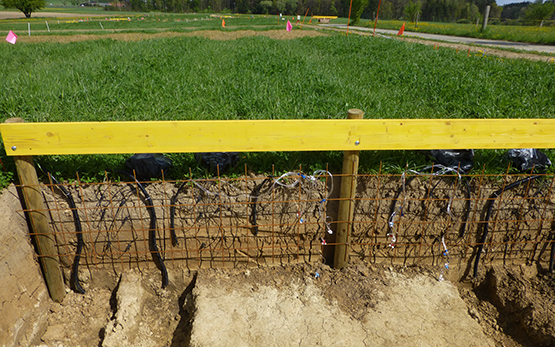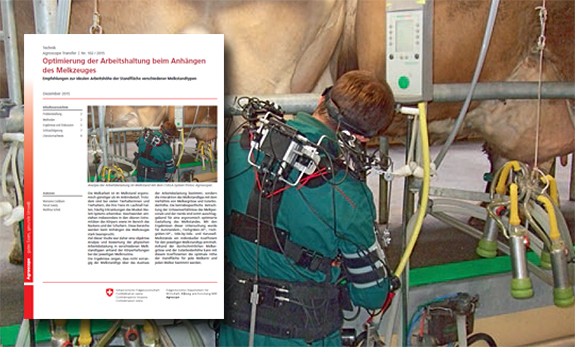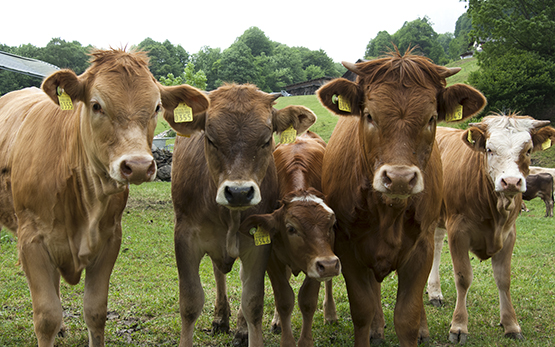Arrázola-Vásquez E., Larsbo M., Capowiez Y., Taylor A., Herrmann A., Keller T.
Estimating energy costs of earthworm burrowing using calorimetry.
European Journal of Soil Biology, 121, 2024, 1-9.
Casali E., Larsbo M., Köstel J. K., Jarvis N.
Macropore flow in relation to the geometry and topology of soil macropore networks: Re-visiting the kinematic wave equation.
Journal of Hydrology, 630, 2024, 1-9.
Garland G., Köstel J. K., Johannes A., Heller O., Doetterl S., Or D., Keller T.
Perspectives on the misconception of levitating soil aggregates.
Soil, 10, 2024, 23-31.
Schlüter S., Köstel J. K.
Soil Structure.
Dans: Encyclopedia of soils in the environment, Volume 5. Second Edition, Ed. Academic Press 2023, Elsevier. 2023, 1-7.
Larsbo M., Köstel J. K., Krab E., Klaminder J.
Quantifying earthworm soil ingestion from changes in vertical bulk density profiles.
European Journal of Soil Biology, 120, 2023, 1-9.
Schwenk A., Larsbo M., Jarvis N., Köstel J. K.
Three-dimensional X-ray imaging of macropore flow.
Geoderma, 440, 2023, 1-18.
de Lima R. P., Rolim M. M., Torres L. C., Cavalieri-Polizeli K. V. M., Keller T.
Modelagem da compactação do solo induzida pelo tráfego agrícola.
Dans: Tópicos em Ciência do Solo. Band 12, Ed. Sociedade Brasileira de Ciência do Solo, 2023.
Romero Ruiz A., Rivero M. J., Milne A., Morgan S., Meo Filho P., Pulley S., Segura C., Harris P., Lee M. R. F., Coleman K., Cardenas L., Whitmore A. P.
Grazing livestock move by Lévy walks: Implications for soil health and environment.
Journal of Environmental Management, 345, 2023, 1-13.
Blanchy G., Albrecht L., Bragato G., Garré S., Jarvis N., Köstel J. K.
Impacts of soil management and climate on saturated and near-saturated hydraulic conductivity: Analyses of the Open Tension-disk Infiltrometer Meta-database (OTIM).
Hydrology and Earth System Sciences, 27, (14), 2023, 2703-2724.
Schjønning P., Lamandé M., De Pue J., Cornelis W. M., Labouriau R., Keller T.
The challenge in estimating soil compressive strength for use in risk assessment of soil compaction in field traffic.
Advances in Agronomy, 178, 2023, 61-105.
Keller T., Karlen D. L., Hallett P. D.
Soil tilth.
Dans: Encyclopedia of Soils in the Environment. 2nd edition, Elsevier. 2023, 48-56.
Johannes A., Kellermann L. A., Weisskopf P.
Evolution des méthodes de tests à la bêche SolDoc, VESS2020 et SpadeSubVESS en Suisse.
Agrarforschung Schweiz, 14, 2023, 197-206.
autres langues: allemand
Nazari M., Arthur E., Lamandé M., Keller T., Bilyera N., Bickel S.
A meta-analysis of soil susceptibility to machinery-induced compaction in forest ecosystems across global climatic zones.
Current Forestry Reports, 9, 2023, 370-381.
Tschanz P., Köstel J. K., Volpe V., Albrecht M., Keller T.
Morphology and temporal evolution of ground-nesting bee burrows created by solitary and social species quantified through X-ray imaging.
Geoderma, 438, 2023, 1-13.
Bahrami M., Naderi-Boldaji M., Ghanbarian D., Keller T.
Discrete element modelling of stress propagation in soil under a rigid wheel in a soil bin: A simulation of probe inducing stress deviation and wheel speed.
Biosystems Engineering, 230, 2023, 159-170.
van den Akker J.J.H., ten Damme L., Lamandé M., Keller T.
Compaction.
Dans: Encyclopedia of Soils in the Environment. 2nd Edition, Elsevier. 2023, 85-99.
Johannes A., Weisskop P., Boivin P., Boizard H.
Spade-SubVESS Evaluation visuelle de la structure du sous-sol avec bêche.
Ed. Agroscope, 2023, 2 pp.
autres langues: allemand | anglais
Blanchy G., Albrecht L., Köstel J. K., Garré S.
Potential of natural language processing for metadata extraction from environmental scientific publications.
Soil, 9, (1), 2023, 155-168.
Klaminder J., Krab E., Larsbo M., Jonsson H., Fransson J., Köstel J. K.
Holes in the tundra: Invasive earthworms alter soil structure and moisture in tundra soils.
Science of the Total Environment, 859, (Part 2), 2023, 1-8.
Keller T., Lamandé M., Naderi-Boldaij M., de Lima R.P.
Soil compaction due to agricultural field traffic: An overview of current knowledge and techniques for compaction quantification and mapping.
Dans: Advances in Understanding Soil Degradation. Springer. 2022, 287-312.
Colombi T., Keller T.
Effects of high soil density on soil functions and crop growth.
Dans: Soil Constraints to Crop Production. Cambridge Scholar Publishing. 2022, 38-61.
Arrázola-Vásquez E.M., Larsbo M., Capowiez Y., Taylor A., Sandin M., Iseskog D., Keller T.
Earthworm burrowing modes and rates depend on earthworm species and soil mechanical resistance.
Applied Soil Ecology, (178), 2022, 1-9.
Hosseinpour-Ashenaabad R., Keller T., Larsbo M., Hallett P.D.
Dual-platform micromechanical characterization of soils: Oscillation shear rheometry and spherical indentation.
Soil & Tillage Research, (223), 2022, 1-12.
Bahrami M., Naderi-Boldaji M., Ghanbrian D., Keller T.
Simulation of soil stress under plate sinkage loading: A comparison of finite element and discrete element methods.
Soil & Tillage Research, (223), 2022, 1-10.
Köstel J. K., Fukumasu J., Larsbo M., Herrmann A., Ariyathilaka P., Magdysyuk O., Burca G.
Potential of combined neutron and X-ray imaging to quantify local carbon contents in soil.
European Journal of Soil Science, 73, (1), 2022, 1-19.
Fukumasu J., Jarvis N., Köstel J. K., Kätterer T., Larsbo M.
Relations between soil organic carbon content and the pore size distribution for an arable topsoil with large variations in soil properties.
European Journal of Soil Science, 73, (1), 2022, 1-15.
Keller T., Or D.
Farm vehicles approaching weights of sauropods exceed safe mechanical limits for soil functioning.
Proceedings of the National Academy of Sciences of the United States of America, 119, (21), 2022, 1-6.
Barbosa L.A.P., Gerke K.M., Munkholm L.J., Keller T., Gerke H.H.
Discrete element modelling of aggregate shape and internal structure effects on Weibull distribution of tensile strength.
Soil & Tillage Research, 219, 2022, 105341.
Parvin N., Coucheney E., Gren I.-M., Andersson H., Elofsson K., Jarvis N., Keller T.
On the relationships between the size of agricultural machinery, soil quality and net revenues for farmers and society.
Soil Security, 6, 2022, 100044.
Romero-Ruiz A., Linde N., Baron L., Breitenstein D., Keller T., Or D.
Lasting effects of soil compaction on soil water regime confirmed by geoelectrical monitoring.
Water Resources Research, 58, 2022, e2021WR030696.
Weiss L., Lutz S. , Keller T., Weisskopf P.
Physikalische Bodeneigenschaften: Recherche zum Stand der Technik zu Bestimmungsmethoden und zu Geräten.
Ed. Kompetenzzentrum Boden, KOBO-Bericht Nr. 1, 2021, 87 pp.








